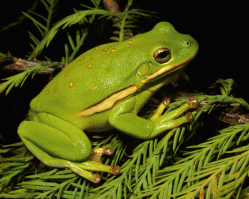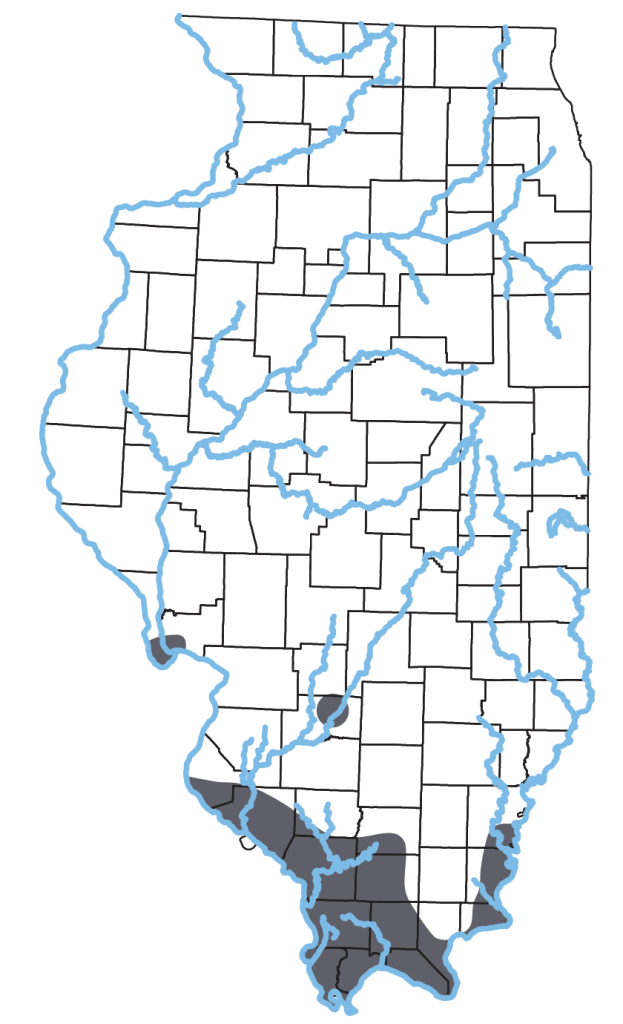Hyla cinerea (Schneider, 1799)

Key Characters: Smooth skin; large toe pads; white or pale yellow stripe from upper lip to groin; nearly uniform green above.
Similar Species: Gray treefrogs lack the light stripe along the sides and have mottling on the back. See Key to Frogs & Toads of Illinois for help with identification.
Subspecies: None recognized.
Description: Medium-sized (up to 6 cm SVL) bright green, yellowish green, olive green, or lime green frog with a few small splatters of gold or white. Belly clear pale yellow to white. Male slightly smaller than female. The male has a wrinkled throat indicating a vocal pouch.
Habitat: Open brushy borders of cypress swamps, floodplain sloughs, cattail marshes, lakes, and farm ponds.
Natural History: Adults and juveniles are seen on roads during and after rain. Diet consists of insects. Can change between dark and light green depending on temperature and lighting. Perches by day on upright cattail or other plant while legs are tightly tucked under body. Breeds late May to August. Males call, sometimes in large choruses, from button bush, swamp rose, lily pads, or other shoreline plants, and calls sound like a series of metallic honks, similar to cow bells or barking dogs. Eggs are laid under water surface and are attached to roots of floating vegetation. Embryos hatch in a few days and tadpoles transform in two months. Juveniles often feed in nearby grassy fields in late summer and autumn.
Distribution Notes: The Clinton and Jersey county records are undoubtedly introduced. They may be accidentally included with shipments of game fish.
Status: Locally abundant in extreme southern counties where cypress and tupelo occur in dense stands.
Etymology: Hyla – (Greek) in honor of Hylas, a companion of Hercules; cinerea – cinereus (Latin) meaning ash-colored.
Original Description: Schneider, 1799. Historiae amphibiorum naturalis et literariae. Fasciculus primus. Formann, Jena. 1 264 pp.
Type Specimen: Bloch Museum?
Type Locality: “Carolina”
Original Name: Calamita cinereus
Nomenclatural History: H. Garman was the first to include this species in the Illinois herpetofauna (1892. A synopsis of the reptiles and amphibians of Illinois. Illinois Laboratory of Natural History Bulletin 3(13):215-388). Junior synonyms that have been used in the Illinois literature include: Hyla carolinensis (Schneider, 1799) Hist. Amph. Nat.:174; Hyla lateralis Bosc In Daudin, 1800, Hist. Nat. Quad. Ovip., Livr. 2: 21, pl. 5; and Hyla cinerea semifasciata Hallowell, 1857 “1856”, Proc. Acad. Nat. Sci. Philadelphia, 8: 307.


